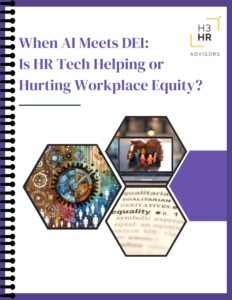When AI Meets DEI: Is HR Tech Helping or Hurting Workplace Equity?
AI is revolutionizing how HR teams hire, promote, and engage talent, but is it helping or hurting efforts to build more diverse and inclusive workplaces?

When AI Meets DEI: Is HR Tech Helping or Hurting Workplace Equity?
AI is revolutionizing how HR teams hire, promote, and engage talent, but is it helping or hurting efforts to build more diverse and inclusive workplaces? This eye-opening article dives deep into the double-edged sword of AI in HR: how it can both combat and reinforce bias. From real-world fails like Amazon’s infamous résumé bot to smart strategies HR leaders can use to ensure AI supports and not detracts from DEI goals, this is a must-read for anyone navigating the AI-powered future of work.
Download the free report HERE
